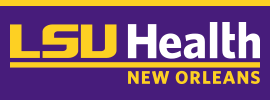Oral gepotidacin for the treatment of uncomplicated urogenital gonorrhoea (EAGLE-1): a phase 3 randomised, open-label, non-inferiority, multicentre study
Document Type
Article
Publication Date
4-14-2025
Publication Title
The Lancet
Abstract
BACKGROUND: Gepotidacin, a first-in-class, bactericidal, triazaacenaphthylene antibacterial that inhibits bacterial DNA replication, was shown to be efficacious and well tolerated in the treatment of uncomplicated urinary tract infections. We evaluated the efficacy and safety of gepotidacin for the treatment of uncomplicated urogenital gonorrhoea. METHODS: EAGLE-1 (NCT04010539) was a phase 3, open-label, sponsor-blinded, multicentre, non-inferiority study evaluating oral gepotidacin (two 3000 mg doses administered 10-12 h apart) compared with 500 mg intramuscular ceftriaxone plus 1 g oral azithromycin for the treatment of gonorrhoea. Eligible participants were aged 12 years and older, had a bodyweight over 45 kg, and had suspected uncomplicated urogenital gonorrhoea (including mucopurulent discharge), a positive laboratory test for Neisseria gonorrhoeae, or both. Participants were randomly allocated in a 1:1 ratio to each treatment group, stratified by sex (original urogenital anatomy at birth) and sexual orientation (men who have sex with men [MSM], men who have sex with women [MSW], and female) in combination, and age group (age < 18 years, ≥18 to 65 years, or >65 years). The primary efficacy endpoint was microbiological success, defined as culture-confirmed bacterial eradication of N gonorrhoeae from the urogenital body site at test-of-cure (days 4-8). The non-inferiority margin was prespecified at -10%. The primary outcome was assessed in the microbiological intention-to-treat (micro-ITT) population, all participants randomly allocated to a study treatment who received at least one dose of their study treatment and had confirmed ceftriaxone-susceptible N gonorrhoeae isolated from the baseline culture of their urogenital specimen. The safety population comprised all participants who received one or more doses of any study treatment. FINDINGS: Between Oct 21, 2019, and Oct 10, 2023, 628 participants were randomly allocated (314 allocated to each treatment group). Overall, 39 (6%) of 628 participants discontinued the study prematurely (20 in the gepotidacin group and 19 in the ceftriaxone plus azithromycin group), with the primary reason being lost to follow-up. The micro-ITT population included 406 participants (202 in the gepotidacin group and 204 in the ceftriaxone plus azithromycin group). Most participants in the micro-ITT population were male (372 [92%] vs 34 [8%] female), and there was a higher percentage of participants who were MSM (290 [71%]) compared with participants who were MSW (82 [20%]). Participants were predominantly White (299 [74%]) or Black or African American (61 [15%]), with 70 (17%) identifying as Hispanic or Latino. Results of the primary analysis of microbiological response at test-of-cure demonstrated microbiological success rates of 92·6% (187 of 202 [95% CI 88·0 to 95·8]) in the gepotidacin group and 91·2% (186 of 204 [86·4 to 94·7]) in the ceftriaxone plus azithromycin group (adjusted treatment difference -0·1% [95% CI -5·6 to 5·5]). Gepotidacin was non-inferior to ceftriaxone plus azithromycin. No bacterial persistence of urogenital N gonorrhoeae was observed at test-of-cure for either group. The gepotidacin group had higher rates of adverse events and drug-related adverse events, mainly due to gastrointestinal adverse events, and almost all were mild or moderate. No treatment-related severe or serious adverse events occurred in either group. INTERPRETATION: Gepotidacin demonstrated non-inferiority to ceftriaxone plus azithromycin for urogenital N gonorrhoeae, with no new safety concerns, offering a novel oral treatment option for uncomplicated urogenital gonorrhoea. FUNDING: GSK and federal funds from the Office of the Assistant Secretary for Preparedness and Response, Biomedical Advanced Research and Development Authority.
First Page
1608
Last Page
1620
PubMed ID
40245902
Volume
405
Issue
10489
Recommended Citation
Ross, Jonathan D.; Wilson, Janet; Workowski, Kimberly A.; Taylor, Stephanie N.; Lewis, David A.; Gatsi, Sally; Flight, William; Scangarella-Oman, Nicole E.; Jakielaszek, Charles; Lythgoe, Dan; Powell, Marcy; Janmohamed, Salim; Absalon, Judith; and Perry, Caroline, "Oral gepotidacin for the treatment of uncomplicated urogenital gonorrhoea (EAGLE-1): a phase 3 randomised, open-label, non-inferiority, multicentre study" (2025). School of Medicine Faculty Publications. 3786.
https://digitalscholar.lsuhsc.edu/som_facpubs/3786
10.1016/S0140-6736(25)00628-2


